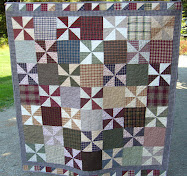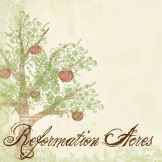Starting our month long series of looking into bread making, I thought it would be appropriate to first look, briefly, at the history of bread. Bread, in one form or another, has been one of the principal forms of food for man from earliest times. Bread, both leavened and unleavened, is mentioned in the Bible many times. The ancient Greeks and Romans knew bread as a staple.
Bread, both leavened and unleavened, is mentioned in the Bible many times. The ancient Greeks and Romans knew bread as a staple.
In Old Testament times, all the evidence points to the fact that bread-making, preparing the grain, making the bread and baking it, was the women's work, but in the palaces of kings and princes and in large households, the bakers' duties would be specialized. Bread was leavened; that is, an agent in the form of a 'barm' was added to the dough that caused the mixture to rise in the shape of our familiar loaf.
The rushed departure of the Israelites from Egypt (thanks to Pharaoh,) described in the Book of Exodus, prevented their bread being leavened as usual.
I read that, “Through much of history, a person's social station could be discerned by the color of bread they consumed. The darker the bread, the lower the social station. This was because whiter flours were more expensive and harder for millers to adulterate with other products. Today, we have seen a reversal of this trend when darker breads are more expensive and highly prized for their taste as well as their nutritional value.” and had to laugh at the reversal over the centuries.
 Bread, both leavened and unleavened, is mentioned in the Bible many times. The ancient Greeks and Romans knew bread as a staple.
Bread, both leavened and unleavened, is mentioned in the Bible many times. The ancient Greeks and Romans knew bread as a staple.In Old Testament times, all the evidence points to the fact that bread-making, preparing the grain, making the bread and baking it, was the women's work, but in the palaces of kings and princes and in large households, the bakers' duties would be specialized. Bread was leavened; that is, an agent in the form of a 'barm' was added to the dough that caused the mixture to rise in the shape of our familiar loaf.
The rushed departure of the Israelites from Egypt (thanks to Pharaoh,) described in the Book of Exodus, prevented their bread being leavened as usual.
I read that, “Through much of history, a person's social station could be discerned by the color of bread they consumed. The darker the bread, the lower the social station. This was because whiter flours were more expensive and harder for millers to adulterate with other products. Today, we have seen a reversal of this trend when darker breads are more expensive and highly prized for their taste as well as their nutritional value.” and had to laugh at the reversal over the centuries.

In doing some research on bread and flour I was surprised at what I found. Most of the information, available on the internet, had much to do with whole wheat breads, white breads and little else. Especially when it came to researching flours.
While Whole Wheat and Unbleached White may be the common flours you see on your supermarket shelf, there is a wide range of flours that are useful (and even healthier!) for baking. Spelt Flour, Kamut Flour, Rye Flour, Bread Flour, Pastry Flour, and even flours such as Almond and Rice Flour, for those who are trying to maintain a gluten free diet.
This month we’ll try different recipes, experiment with some new (to me, and hopefully to you too) flours, look at bread making methods and even have an interview with a seasoned bread maker. I hope you’ll enjoy this look into bread making!
While Whole Wheat and Unbleached White may be the common flours you see on your supermarket shelf, there is a wide range of flours that are useful (and even healthier!) for baking. Spelt Flour, Kamut Flour, Rye Flour, Bread Flour, Pastry Flour, and even flours such as Almond and Rice Flour, for those who are trying to maintain a gluten free diet.
This month we’ll try different recipes, experiment with some new (to me, and hopefully to you too) flours, look at bread making methods and even have an interview with a seasoned bread maker. I hope you’ll enjoy this look into bread making!

.jpg)


















































7 comments:
great intro!!! that was interesting about the color of the bread indicating class.
Thanks for the introduction! I'm really looking forward to seeing the different flours - I bake all our bread but I'm a complete coward about stepping away from plain white and occasionally malted wholegrain.
This looks really yummy. I can't even remember now how I found your blog...but here I am :) :) I have a lot of super wonderful blogging friends and they have great taste...so I think I found you that way..
Oh, my name is Heather, too :) :) I'm looking forward to reading more posts about cooking, homemaking etc :) :)
I received my stuff from the Sew Mama Sew giveaway. I have been sick and keep forgetting to take pictures. It did arrive and I am so sorry for my bad behavior.
Heather, I can't seem to get your button onto my blog. Do you know how to do it? Any tips?
Sometimes I want to throw this computer out the window!
Oh, I need all the help I can get on making bread! Looking forward, karen
Thanks so much for the Bread Making class. So much information! I can't wait to try the sourdough bread. Do you have a recipe for the Peasant Bread? That one sounds good too.
Have a Happy Thanksgiving!
Post a Comment